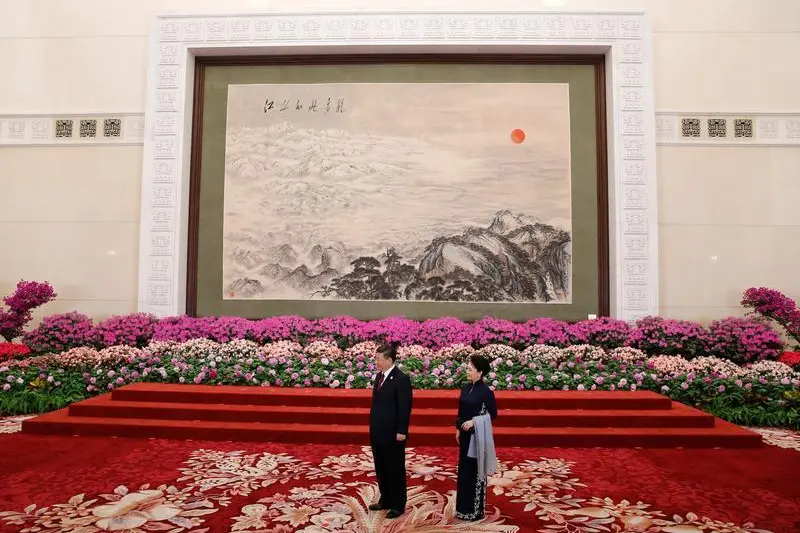PHOTO
(Repeats item issued earlier. The opinions expressed here are those of the author, a columnist for Reuters.)
LAUNCESTON, Australia - China's ambitious Belt and Road Initiative (BRI) is one of those vast programmes that should be positive for global commodities, but finding any concrete proof of increased demand is proving far more elusive.
Last week's BRI summit saw Chinese President Xi Jinping touting $64 billion in new deals for the plan to develop transport and infrastructure projects linking Asia, Africa and Europe.
But questions still remain as to whether the BRI is much more than a publicity campaign designed as part of Beijing's efforts to grow its diplomatic and economic clout, or whether it is indeed going to result in a swathe of investment that could eventually top out at more than $1 trillion.
Certainly, Xi didn't supply any details of the $64 billion in new deals, and estimates vary widely on how much money has actually been spent since the launch of BRI in 2013.
Perhaps one way of looking at the impact of BRI on commodities is to examine China's imports of raw materials and exports of capital and steel.
If China was really ramping up its spending on BRI projects, it would be logical to expect to see outbound investment increasing as well.
But the official data shows the trend going the wrong way, with 2018 outbound investment falling to $129 billion, a drop of 18 percent from $158 billion in 2017, and some 34 percent below the all-time high of $196 billion in 2016.
However, what does seem apparent is that China's overseas investment is switching more toward BRI countries and away from developed nations in Europe and North America.
Investment in 65 countries identified as being part of the BRI increased 8 percent in 2018 from a year earlier to 21.6 percent of the total.
A report from China's National Information Centre last year showed the top five countries for BRI investment were Russia, Kazakhstan, Pakistan, South Korea and Vietnam.
STEEL EXPORTS SLIP
It's also worth looking at China's exports of steel products, which would also expect to be benefiting from BRI projects, as China would be tempted to use up spare capacity in its own industries in order to build infrastructure projects in BRI countries.
However, steel exports have also been trending lower, slipping to 69.5 million tonnes in 2018, the lowest in five years and down from 75.6 million tonnes a year earlier.
It's worth noting that several countries have imposed tariffs on imports of Chinese steel, and this has likely crimped exports.
However, steel exports aren't exactly pointing to a surge in export-led infrastructure spending by China.
Neither are imports of major commodities, with steel-making ingredient iron ore peaking at 1.075 billion tonnes in 2017, before slipping to 1.065 billion last year, according to customs data.
China is the world's largest coal importer, and again the evidence is mixed, with imports rising slightly in 2018 to 280.8 million tonnes from 271.1 million in 2017, but still well off the record 327.2 million in 2013.
Chinese authorities have indicated that they don't want coal imports to rise above current levels as part of efforts to protect the domestic industry and limit the use of the polluting fuel.
While growth in crude oil imports has been strong, this is likely more a reflection of increased domestic demand, building up strategic inventories, and rising exports of refined fuels.
Overall, it's hard to make a case that BRI has had any noticeable impact on China's commodity imports.
It may still be the case that many BRI projects will result in higher commodity imports into the countries where the projects are being built, rather than using China as a place to turn raw materials into beneficiated commodities and machinery.
But for now, the impact of BRI on commodities appears to be negligible.
(Editing by Richard Pullin) ((clyde.russell@thomsonreuters.com)(+61 437 622 448)(Reuters Messaging: clyde.russell.thomsonreuters.com@reuters.net))












